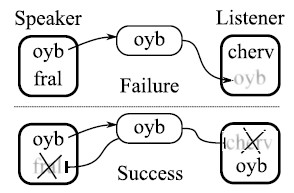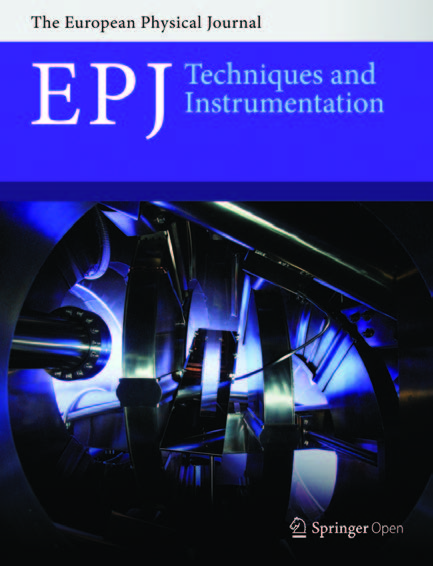News
EPJ AP Highlight - Slowing dynamics of a supersonic beam
- Details
- Published on 25 November 2015

The present investigation of the slowing dynamics of a supersonic atom beam by a counter-propagating resonant laser light, in other words the dynamics of atoms in a so-called “Zeeman slower”, is characterized by two special features which are: (i) a close coupling between simulations and experiments using a nozzle beam of metastable argon atoms, (ii) the use in the simulations of a Monte-Carlo (MC) scheme aimed at analysing step by step (i.e. subsequent cycles of absorption-emission) the slowing process and describing in a realistic way atom random walks due to the spontaneous emission. It allows us to get calculated 2D images and radial profiles of the slowed beam, in good agreement with experiment. Other important characteristics as angular aperture, velocity spreads, coherence radius (not easy to be measured experimentally), etc. also result from the simulation. Since the 3D atomic motion within the laser field is considered, border effects can be studied, while they were not directly accessible in a simple radiative force model. It is finally shown that the experimental characteristics of the slowed beam are reproduced by the calculated ones, assuming a point- like source. In general a laser beam is an efficient tool to manipulate the atomic motion and its interaction with atoms can be accurately characterized by means of the present MC-code. Actually any configuration combining resonant light and atoms is relevant (provided that the semi-classical approximation is valid), in particular the use of a “pushing” laser to generate a slow atomic beam from a magneto-optical trap is a technique which has been successfully tested with metastable argon atoms. Here again the MC-code has been able to accurately predict the characteristics of the generated beam.
EPJ D Highlight - Bringing the chaos in light sources under control
- Details
- Published on 17 November 2015

Study investigates how best to stabilise the output of quantum dot LEDs
Noise is an issue in optical telecommunications. And findings means of controlling noise is key to physicists investigating light-emitting diodes or lasers. Now, an Italo-Iraqi team has worked on a particular type of light source, called the quantum dot light-emitting diode (QDLED). In a study published in EPJ D, Kais Al Namee from the National Institute of Optics, in Florence, Italy and colleagues, demonstrate that modulating bias current of the QDLED could lead to countering the noise. This, in turn, leads to stabilising such light sources, making them better suited for optical telecommunications.
EPJ Plus Focus Point - 3He replacement in neutron detection: Current status and perspectives
- Details
- Published on 17 November 2015
One of the most important issues that the neutron community is currently facing is related to the lack of 3He for detection purposes. This problem has triggered an interesting and stimulating research and development activity worldwide, with the aim of finding effective and cheap solutions for 3He replacement. With the advent of new materials, advanced electronics and more powerful real time computing tools it has now become possible to investigate novel designs of neutron detectors to be used in various fields of research and technology, and to address the needs of more sophisticated applications.
The aim of this issue is to present an up-to-date, although not exhaustive, review on the R&D activities on 3He-free neutron detectors, with the aim of generating further discussions and activities on the subject, stimulate synergies between groups with different expertise, and show examples of existing neutron sources where new detectors and techniques can be tested and validated. This EPJ Plus Focus Point addresses all aspects related to the design of an innovative 3He-free neutron detector, from the development of new detection concepts and active material, to fast front-end electronics and acquisition systems, to the availability of neutron beams of suitable energy for detector characterization.
EPJ B Colloquium: Hierarchy of scales in language dynamics
- Details
- Published on 12 November 2015

Language is a collective phenomenon, shared by a group of speakers, and originating from interactions between individual group members. This dimension has captured the interest of statistical physicists who have applied their methods to study how languages change and differentiate themselves from one another over time.
EPJ E Highlight - Zooplankton: not-so-passive motion in turbulence
- Details
- Published on 10 November 2015

Physicists show that despite their limited swimming abilities, zooplankton called calanoid copepods display active, energetic behaviour in turbulent flows
Imagine a species that is only one millimetre long and has only a limited swimming ability. Yet, its mobility is sufficient for moving, feeding and reproducing in freshwater and seawater. That’s exactly what a type of zooplankton of the crustaceans family - namely the calanoid copepods - does. In a study published in EPJ E, physicists shed new light on how these zooplankton steer large-scale collective motion under strong turbulence. To do so, the authors study the zooplankton’s small-scale motion mechanisms when subjected to background flow motion. These findings are the work of François-Gaël Michalec from the Institute of Environmental Engineering, ETH Zurich, Switzerland, and European colleagues. Ecological applications in the field of zooplankton behaviour ecology include, for example, modelling the feeding efficiency of their predator, fish larvae.
EPJ H Highlight - May the 5th force be with you
- Details
- Published on 27 October 2015

Ephraim Fischbach revisits the wealth of research emerging from the quest for the fifth force, which he hypothesised in the 1980s as being a new fundamental force in nature
Discovering possible new forces in nature is no mean task. The discovery of gravity linked to Newton’s arguably apocryphal apple experiment has remained anchored in popular culture. In January 1986, Ephraim Fischbach, Physics Professor from Purdue University in West Lafayette, Indiana, had his own chance to leave his mark on collective memory. His work made the front page of the New York Times after he and his co-authors published a study uncovering the tantalising possibility of the existence of a fifth force in the universe. In an article published in EPJ H, Fischbach gives a personal account of how the existence of the gravity-style fifth force has stimulated an unprecedented amount of research in gravitational physics - even though its existence, as initially formulated, has not been confirmed by experiment.
EPJ A Review - Melting hadrons, boiling quarks
- Details
- Published on 27 October 2015

In the context of the Hagedorn temperature half-centenary our understanding of the hot phases of hadronic matter both below and above the Hagedorn temperature is reviewed. The first part of this review paper just published in EPJ A addresses many frequently posed questions about properties of hadronic matter in different phases, phase transition and the exploration of quark-gluon plasma (QGP). The historical context of the discovery of QGP is described and the role of strangeness and strange antibaryon signature of QGP illustrated. In the second part the corresponding theoretical ideas and how experimental results can be used to describe the properties of QGP at hadronization are described.
EPJ Data Science Highlight - Using patients’ trail of digital crumbs for public health surveillance
- Details
- Published on 20 October 2015

© bakhtiarzein / Fotolia
Public health agencies could capitalise on streams of data related to patients on the internet but only once interpretation methods have been validated.
Data is ubiquitous. In the area of heath, there are growing data streams directly initiated by patients through their activities on the internet and on social networks and other related ones such as electronic medical records and pharmacy sales data. These so-called Novel Data Streams (NDS) are very appealing to public health surveillance officials due to their ease of collection. A new paper published in EPJ Data Science evaluates the currently available NDS surveillance papers before outlining a conceptual framework for integrating such data into current public health surveillance systems. The authors, who hail from public health agencies, academia, and the private sector, highlight the need for future rigorous evaluation and validation of standards before NDS can effectively reinforce existing public health surveillance systems.
EPJ B Highlight - Anti-clumping strategy for nanoparticles
- Details
- Published on 16 October 2015

Scientists identify the factors involved in preventing nanoparticles used in industrial applications from aggregating
Nanoparticles are ubiquitous in industrial applications ranging from drug delivery and biomedical diagnostics to developing hydrophobic surfaces, lubricant additives and enhanced oil recovery solutions in petroleum fields. For such nanoparticles to be effective, they need to remain well dispersed into the fluid surrounding them. In a study published in EPJ B, Brazilian physicists identified the conditions that lead to instability of nanoparticles and producing aggregates. This happens when the electric force on their surface no longer balances by the sum of the attractive or repulsive forces between nanoparticles. These findings were recently published by Lucas de Lara from the Centre for Natural and Human Sciences, at the University Federal of ABC (UFABC) in Santo André, SP, Brazil and colleagues.
EPJ TI Review - Trapping Molecules on Chips
- Details
- Published on 12 October 2015

In recent years, it has been demonstrated that neutral molecules can be loaded on a microchip directly from a supersonic beam. The molecules are confined in microscopic traps that can be moved smoothly over the surface of the chip. Once the molecules are trapped, they can be decelerated to a standstill, for instance, or pumped into selected quantum states by laser light or microwaves. Molecules are detected on the chip by time-resolved spatial imaging, which allows for the study of the distribution in the phase space of the molecular ensemble.
In this Tutorial Review article, part of the thematic series for Methods for Cold Molecules and Ions, the author introduces the techniques used to trap cold molecules on microchips, and reviews some of the recent developments in this field. First, the essential features of microchip design and the necessary experimental setup are described. Then, the problem of nonadiabatic losses from the microtraps is addressed and the most viable solutions are presented. Further, some recent results on state transition of trapped molecules are presented, involving rotational and vibrational transitions. And finally, on-chip detection and imaging is briefly discussed.




